|
Blackburn Firebrand TF.Mk.5
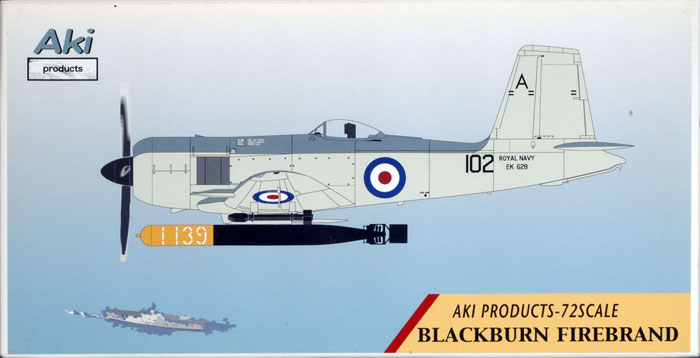
Aki Products,
1/72 scale
S
u m m a r y
|
| Catalogue Number: |
Aki Products AKI003 - Blackburn
Firebrand TF.Mk.5 |
| Scale: |
1/72 |
| Contents and Media: |
34 parts in cream coloured resin; 10
parts in clear resin; three parts in black vinyl; one poly cap; markings for one aircraft |
| Price: |
USD$80.00 plus postage online from DMC Models' website |
| Review Type: |
FirstLook |
| Advantages: |
Beautifully cast and detailed;
amazing engineering; includes rockets, torpedo and full engine; crisp
and consistently recessed panel lines; razzor sharp trailing edges; no casting blocks;
simple parts breakdown; large locating pins for precise fit; high
quality decals. |
| Disadvantages: |
Some minor flash to clean up; tricky
alignment of engine cowlings |
| Recommendation: |
Highly Recommended |
Reviewed by Brett Green

HyperScale is proudly supported by Squadron.com
We all know the limited-run kit
mantra: "Significant cleanup and constant test fitting is essential
to ensure a good result. Experience is required".
Well, here is the exception.
The Blackburn Firebrand was a big,
brutal but beautiful British Fighter / Torpedo bomber which was
ultimately underpowered and suffered a long gestation period. The
prototype flew in 1942 but the type only entered limited Fleet Air Arm
service after the Second World War.
Aki Products is a limited run
manufacturer from Japan. Kit number AKI003 is a 1/72 scale Blackburn
Firebrand.
The design of the box top seems to
offer a nod in the direction of Airfix packaging from the 1970s, but any
similarity ends there.
Under the lid, Aki's 1/72 scale
Firebrand looks very different from most limited run resin kits. For a
start, the parts are attached to fine resin runners which look very much
like conventional plastic kit sprues. There is also an amazing amount of
detail cast on to individual parts. For example, the lower wing has
rocket stubs cast in place, and the fuselage halves feature sidewall and
tail wheel well detail on the inside.
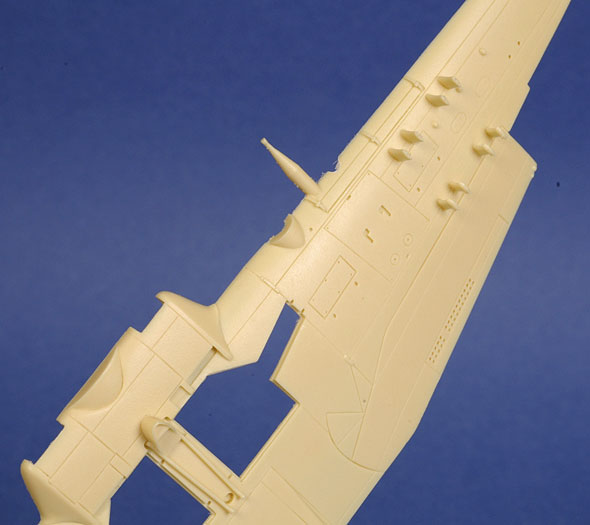
Another major leap forward is the
provision of large locating plugs (they are too big to be called pins).
There plugs work very well, ensuring perfect alignment for the fuselage
halves and the wing parts. The other major component, the one-piece
horizontal tail surfaces, slot into a positive recess in the empennage.
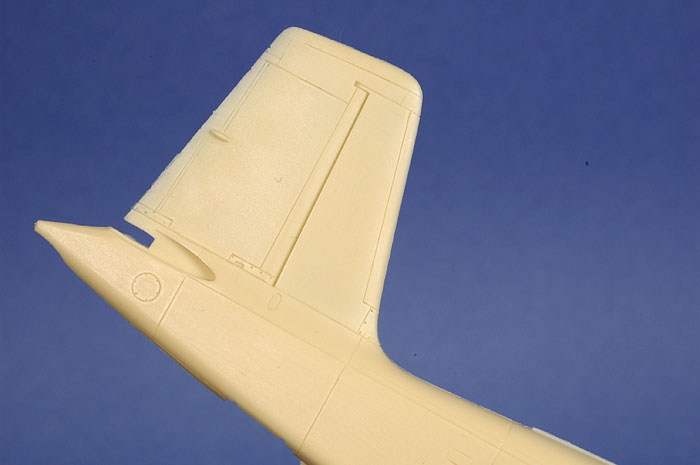
Click
the thumbnails below to view larger images:
[../../../photogallery/photo00013901/real.htm]
Very little conventional cleanup is required. Just snip
the parts off the one or two fine connection points and tidy up any
residue with a hobby knife or a sanding stick. Some of the parts do
suffer from light flash, but this can easily be eliminated with a sharp
blade or even a small stiff brush.
Surface detail is exquisite. Panel
lines and selected rivets are perfectly consistent and crisply engraved.
Control surface hinge lines are appropriately emphasised, as are various
raised lumps and bumps. Trailing edges of all flying surfaces are razor
sharp.
The wheel wells are cast on the
underside of the top wing halves. These are fully boxed in and feature
full structural detail.
The cockpit looks deceptively simple
on the sprues, but its full detail is revealed under a coat of paint.
Another highlight of the kit is the
gorgeous Bristol Centaurus engine. This is made up of just six parts,
but they deliver an authentic miniature of this complex powerplant. Some
of the construction looks a little scary, such as the two delicate
manifold parts hugging the cylinders, but the parts literally clip into
place. In the photo below, the parts are not even glued together - just
fantastic.
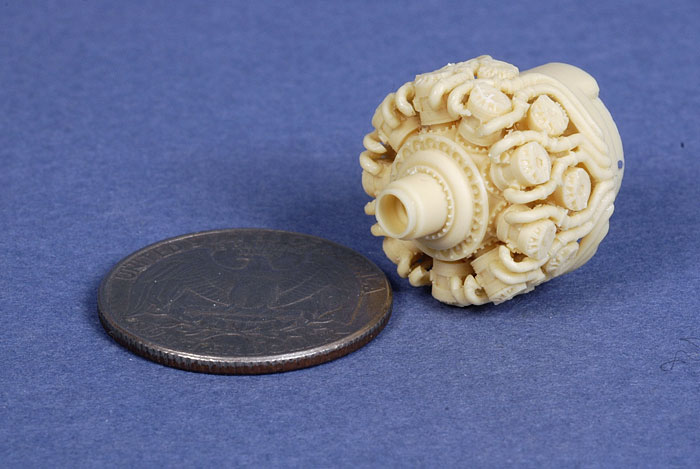
Not surprisingly, the kit provides
separate engine cowlings so that the engine may be displayed. The engine
cowls are supplied in clear resin so you could close the cowls and still
admire your engine if you are that way inclined. Interestingly, the
landing gear is also supplied in clear resin. Separate canopies are
provided for open and closed configurations. The clear resin is a little
cloudy on the sprues, but should sparkle after a bath in Future floor
polish.
Markings are supplied for a single
Firebrand in FAA service. Registration and colour saturation are
excellent.

Instructions are supplied on one piece of A3, folded
paper. The three construction steps are well illustrated and quite
straightforward despite the scarcity of English text. A full colour
marking guide contains callouts for all the decal numbers.
We modellers live in fortunate times to be presented with such a
great choice of niche subjects.
The price we usually pay for these niche subjects in limited run kits
is extra effort in preparation, alignment and assembly. Most of this
heartache has been eliminated by Aki's clever engineering and incredible
casting in their Firebrand kit. In this case, the price we pay is
actually the price. At USD$80.00 for a 1/72 scale kit, it is
certainly not cheap. Even so, value is in the eye (or perhaps the
wallet) of the beholder, and this remarkable level of detail and
innovative engineering could easily justify the price tag.
Over the last few days I have made significant progress toward
finishing the kit. I can advise that the kit is as impressive to build
as it looks in the box. Here is a sneak peak of the state of the model
right now.
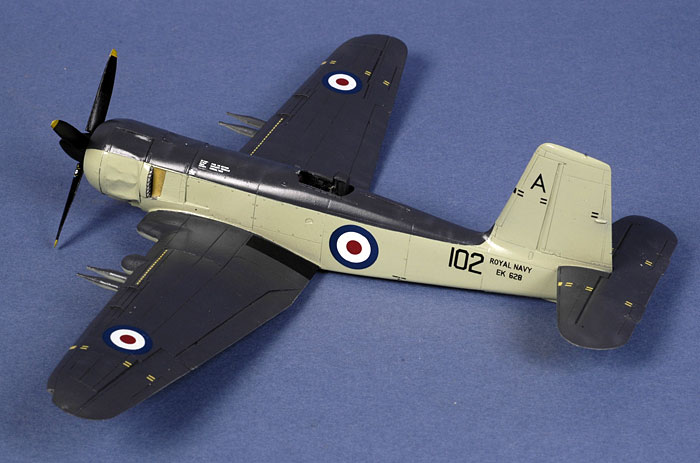
Aki's 1/72 scale Blackburn Firebrand Mk.V sets a new high-water mark
for a beautifully detailed resin kit that could be built by a modeller
with only moderate experience.
Highly Recommended.
Review sample kindly
supplied by DMC Models
Review Text Copyright © 2007 by
Brett Green
Page Created 06 August, 2007
Last updated 24 December, 2007
Back to HyperScale Main Page
Back to Reviews Page
|
Home
| What's New |
Features |
Gallery |
Reviews |
Reference |
Forum |